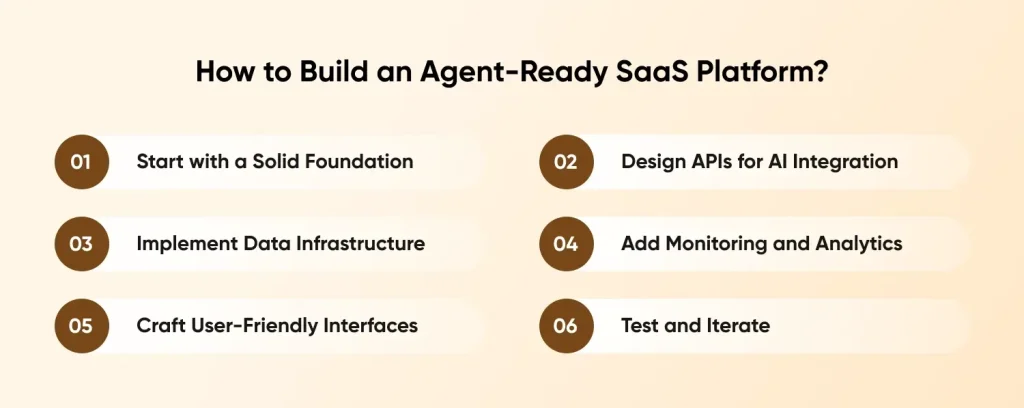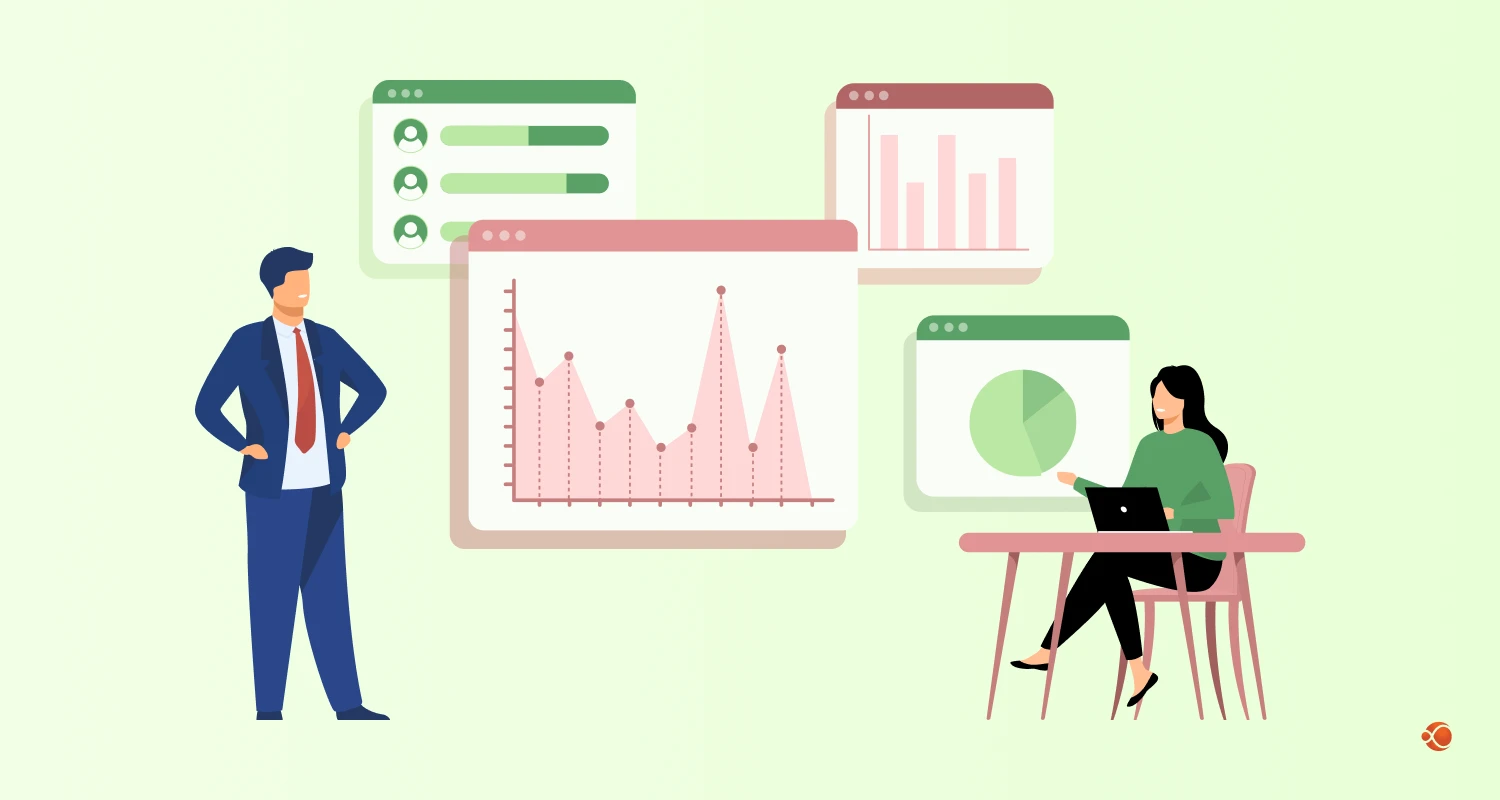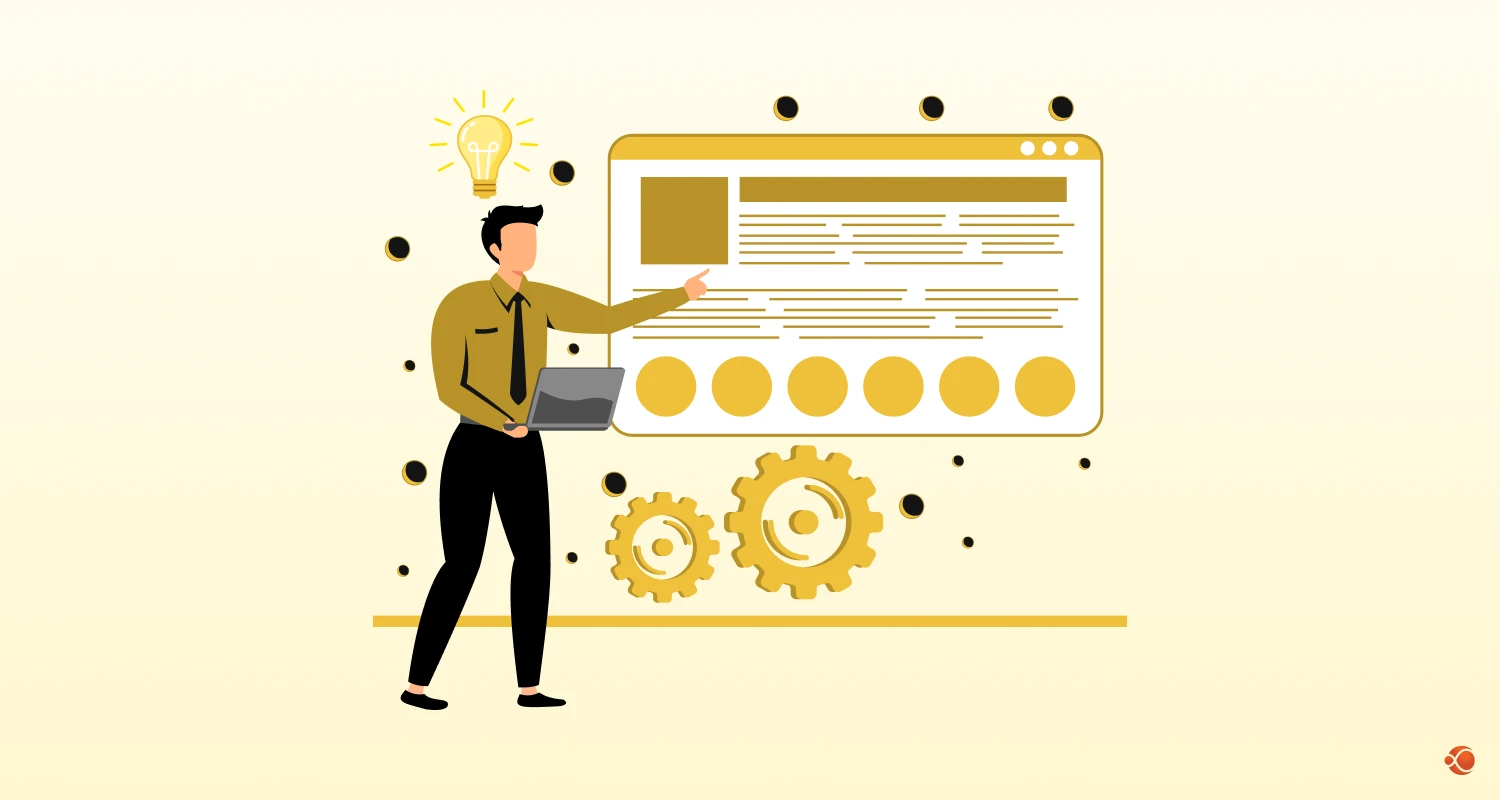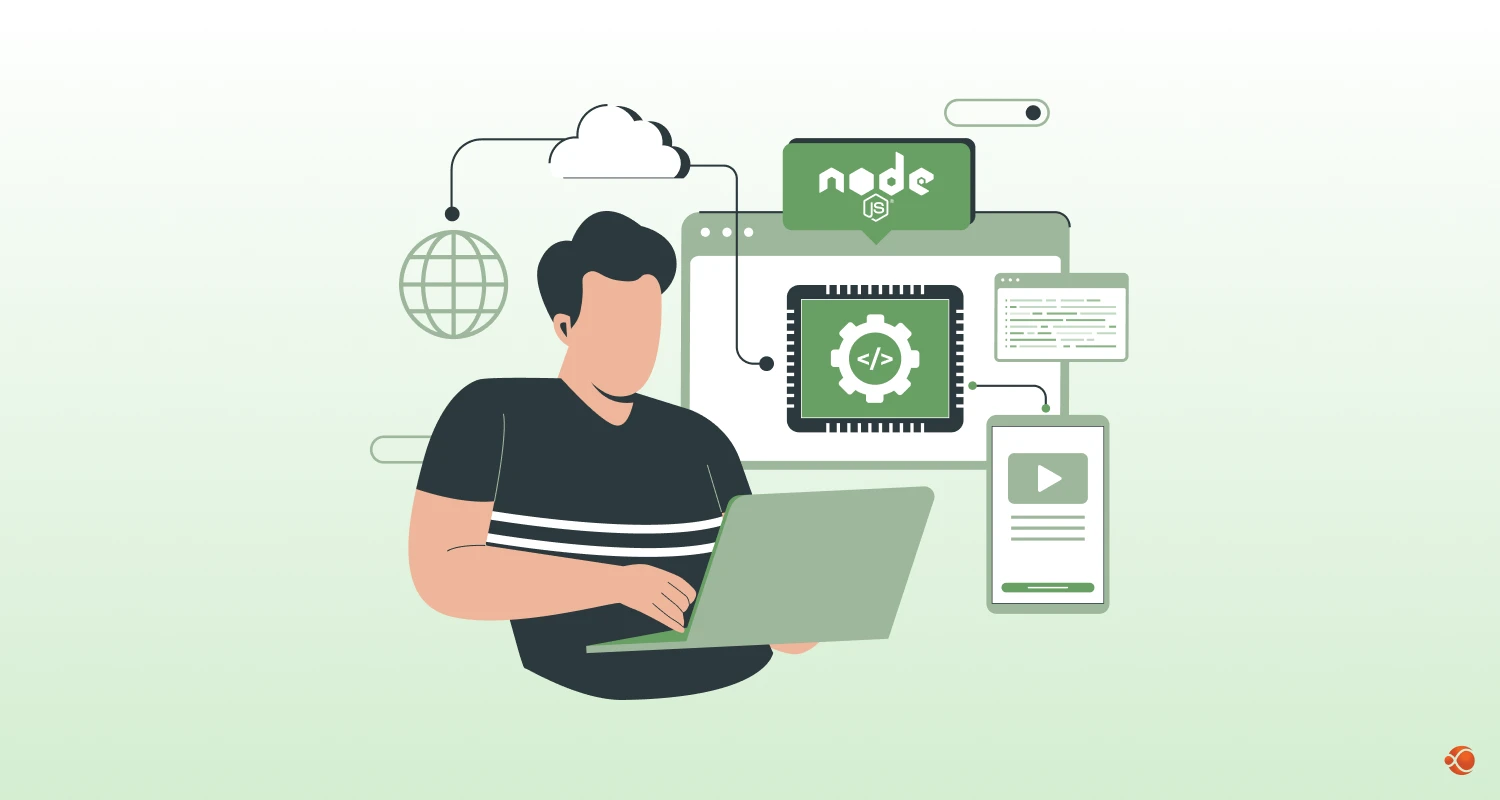Quick Summary: This guide shows how to build an Agentic SaaS platform that pairs scalable cloud software with autonomous AI agents to learn and adapt. It covers core design principles, real-world use cases, and practical steps to future-proof your business. The focus is on enhancing user experience, boosting efficiency, and ensuring strong security through seamless AI integration.
In today’s fast-moving world, businesses are looking for tools, methods, and processes to work smarter, and serve their customers better. One of the biggest challenges they face is keeping up with the technology and making sure their software platforms can handle the growing demands of their users.
SaaS applications were a transformational force when they first came into limelight. Applications that mimic the capabilities of desktop software and can be run on the internet! The idea was revolutionary. As digital transformation is expanding, the expectations on software platforms are on the rise too. Businesses now don’t just want scalable SaaS applications, they want applications that can adapt in real-time to changing needs.
The next wave of innovation is being driven by agentic AI, which are intelligent systems that can make decisions, learn autonomously, and optimize processes without needing constant human oversight.
Today, the convergence of SaaS and agentic AI is setting a new standard. Businesses must move from one-size-fits-all solutions to personalized AI based SaaS platforms that can scale and grow with the user. This will help future-proof your business for this AI-first era, while adding relevant features to your SaaS product, keeping you ahead of the competition.
Why Use Agentic AI for Enterprise SaaS Solutions?
According to a PwC survey in mid‑2025, 79% of organizations reported adopting AI agents in at least one business function, with 19% deploying them at scale, 35% running pilots, and 25% using agentic AI in limited ways.
Agentic AI and SaaS work great together as they combine scalability with intelligence. While SaaS delivers flexible, cloud-based access, Agentic AI development and integration brings learning, automation, and adaptability. Together, they create smarter, more efficient platforms that evolve with user needs and drive better business outcomes.
Grow and Adapt Easily
SaaS platforms can grow as needed. They handle more users and data without breaking a sweat. Smart AI helps by taking over complex tasks and learning from how users behave. This keeps everything running smoothly, even as the platform grows. For example, tools like Salesforce use AI to manage customer relationships better as the business scales.
Always Learning and Improving
One of the most promising characteristics of AI is that it constantly learns from its environment and experience. With each interaction, just how Netflix suggests shows based on what the user watched before, it learns more and more about the user preferences, and improves accuracy over time. This is ideal for SaaS applications that need to be updated regularly. You might be already using services like Zendesk that use AI for improving customer support.
Better User Experience
Agentic AI integration in SaaS platforms makes the experience feel more personal. AI can predict what users need and offer tailored suggestions. It can also automate routine tasks, like how Grammarly suggests corrections as you write. This makes the platform easier and more enjoyable to use. Developers who focus on user-friendly solutions can help achieve this.
Work More Efficiently
Smart AI makes things run smoother. It automates repetitive tasks and reduces mistakes. This lets SaaS providers focus on big-picture goals and new ideas. For example, tools like Zapier connect different apps to automate workflows. This means less time on boring tasks and more time for innovation.
Core Principles of Designing SaaS for Agentic Compatibility
Designing SaaS platforms for Agentic compatibility needs careful planning and a strategic approach. Here are some core principles to follow when opting for SaaS app development services.
Modular and Future-Proof SaaS Architecture
A modular architecture makes it easy to integrate AI agents into the SaaS platform. By breaking the system into smaller and manageable standalone modules, developers can update specific components without affecting the entire platform. This helps the SaaS platforms be ready to keep up with evolving AI capabilities.
Data-Driven Decision Making
Agentic AI websites rely on data to make smart decisions. It is important to build SaaS applications that are capable of collecting, processing, analyzing and using data efficiently. Robust data management practices maintain data quality and integrity, enabling AI agents to perform at their best. AI proof of concept development services can help validate your data strategies.
Interoperability and Integration
Agentic AI development can’t work separately. They need to be well integrated with other components of your system to deliver true value. If your current SaaS application or platform is not ready for such integrations, consider taking help of a professional AI software development company that can design your platform with interoperability. They use standardized APIs and protocols to ease the integration and communication.
Security and Privacy
Trusting AI agents with sensitive information can be paranoia inducing, and to some extent it should be too. It is important to implement strong security measures when going for AI automation. A few best practices to include can be:
- Implementing strong security measures like RBAC (role-based access controls)
- Conducting regular security checks
- Secure your APIs with strong authentication methods using API integration services
- Share only the necessary data with the AI to reduce exposure and minimize risks
- Monitor and log everything the AI does so you can quickly spot and react to any unusual behavior

Agentic SaaS in Action: Real-World Use Cases
Customer Support Automation
Many SaaS companies use AI agents to handle customer support tickets. These agents can read customer messages, understand the problem, and provide solutions automatically. They learn from past interactions to get better over time. Companies like Intercom and Freshworks use this approach to help customers faster while reducing the workload on human support teams.
Sales Process Optimization
Sales teams use AI agents to identify the best leads and predict which customers are most likely to buy. The AI looks at customer behavior, email responses, and website activity to score leads automatically. Tools like HubSpot and Pipedrive use this to assist sales teams focus on the most promising opportunities.
Content Creation and Marketing
Marketing teams make use of AI agents to write content, automate social media posting, and personalize email campaigns. They can use existing AI models or create custom AI models for blog writing, product description generation, and image generation as well. Make sure to carry out proper AI agent evaluation to ensure accuracy.
Financial Management
Accounting and finance SaaS platforms have many use cases for AI agents as well. Some companies use it to categorize expenses, detect fraudulent activities, and also develop intuitive financial reports. It can also look into unusual spending habits and alert users for any potential misuse. Quickbooks integration and Xero services helps ease financial decisions with help of AI.
Project Management
Project management has seen a tremendous surge in demand for AI agents. They are helping managers track progress, predict any delays, and improve resource allocation. When fine-tuned, these AI models can evaluate team performance, and also suggest ways to improve productivity. Monday.com and Asana are two prominent project management platforms often used for project management.
How to Build an Agent-Ready SaaS Platform?

Start with a Solid Foundation
Start from building a future-proof SaaS architecture. It is ideal to opt for a microservice architecture where your application can be broken down into manageable chunks of independent services. These standalone functions can communicate with each other. Doing so makes it easier to add AI agents later where needed, without affecting the entire codebase.
Design APIs for AI Integration
Build APIs that can be easily used by the AI agents for carrying out the given tasks. Make sure to follow standard protocols, and include proper authentication and rate limiting rules on them. These APIs should be optimized for the requests made by AI agents like batch-processing and real-time data updates.
Implement Data Infrastructure
Building agentic web platforms require rich datasets and proper handling of the same. Make sure to optimize your data infrastructure to collect, store, and process large chunks of information. Consider opting for cloud services like Google Cloud or AWS to get better storage and processing power.
Add Monitoring and Analytics
Imagine you’re running a busy restaurant. You’d want to know which dishes people love, which ones they barely touch, and whether they’re leaving happy or frustrated. That’s exactly what monitoring your agentic SaaS platform is like, except instead of watching tables, you’re watching how people interact with your software.
You’re not just collecting numbers for the sake of it. You’re building something much more valuable: a way for your AI to learn from real people doing real work. Every time someone uses your platform, they’re teaching your AI agents something new about what actually helps and what just gets in the way.
Craft User-Friendly Interfaces
Any AI agent will be only as useful as it is easy to operate. Pay special attention to how you place all aspects of the agent on the screen, which includes chat interfaces, simple forms, and voice commands. Make sure the user understands how to get help with what an AI model can do.
Test and Iterate
Start with simple AI features and gradually add more complex capabilities. Test everything thoroughly and get feedback from users. Use this feedback to improve your AI agents and make them more helpful and accurate.
How to Future-Proof Your SaaS Platform?
Stay Flexible with Your Architecture
Build an Agentic SaaS platform so you can easily add new features and technologies. Use modular design principles where different parts of your system can be updated independently.
Focus on Data Quality
AI runs on data the same way a car runs on oil and it needs to be clean and high quality to perform at its best. Bring in skilled data engineers to keep your data accurate, organized, and up to date. Put systems in place to regularly review and clean your data. The better your data, the smarter and more reliable your AI agents will be.
Plan for Scalability
Build your platform with future growth in mind. As your user base and data grow and as your AI gets more advanced you’ll need a system that can handle it all. Cloud platforms that scale automatically are a great place to start. Also, structure your databases so they can manage bigger volumes and more complex tasks over time.
Build Strong Security Practices
As AI becomes a bigger part of your platform, keeping everything secure is non-negotiable. Hire AI developers that can set things up. Use strong login systems, encrypt sensitive information, and run regular security checks. Make sure your AI agents only access the data they absolutely need.
Create a Feedback Loop
Talk to your users regularly. Ask them what’s working with your AI features and what isn’t. When users see you’re listening and making changes based on their feedback, they’ll keep helping you improve. Your AI gets smarter because real people are teaching it what actually matters.
Final Words
If you want your SaaS platform to stay ahead of the curve, now’s the time to act. Smart tools and AI agents can make your business more efficient, improve the customer experience, and help you grow. Use the strategies highlighted in this blog and build an agentic AI SaaS platform. If you are unsure to commit to a full-scale application, start with professional AI MVP development services. Then based on the feedback you can scale to full-fledged application and avail the benefits of integrating Agentic AI into a SaaS platform.
FAQs To Build an Agentic SaaS Platform
What Is Agentic AI and How Does It Relate to SAAS Platforms?
Agentic AI refers to autonomous systems that can think, plan, and carry out complex tasks on their own, without needing constant human input. These intelligent systems tap into APIs from SaaS platforms and use cloud infrastructure to manage multi-step workflows across various tools. By working with structured data and scalable tech, they can automate entire business processes.
Let Me Know how to Create Your Own Agentic AI?
Building agentic AI requires combining large language models with reasoning engines and tool integration layers. Start by defining clear objectives, then select AI frameworks like LangChain or AutoGPT that provide pre-built components for agent development and continuous learning systems.
How to Build Agentic-Ready SAAS Apps?
Creating agentic-ready SaaS applications requires designing comprehensive APIs with clear endpoints and robust authentication systems. Structure your data models to support both human and AI interactions with proper indexing and logging, while creating flexible interfaces that accommodate programmatic interactions.
How Does Agentic AI Differ From Generative AI or Traditional Automation (RPA)?
Agentic AI works on its own to reach goals by planning and making decisions independently. In contrast, generative AI is mainly used to create content based on specific prompts. Traditional automation, like RPA (Robotic Process Automation), sticks to fixed rules and routines. But agentic AI is much more flexible, it can adjust its actions as things change and even handle surprises without needing help from a human.
How will AI Agents Replace SaaS?
AI agents are set to revolutionize SaaS by shifting the focus from using individual tools to achieving outcomes. Instead of users jumping between different software platforms, AI agents will take over by managing entire business processes across multiple systems. These agents will automate complex workflows and carry out tasks on their own, leading to a future where businesses interact with intelligent agents, not separate apps, to get things done.







